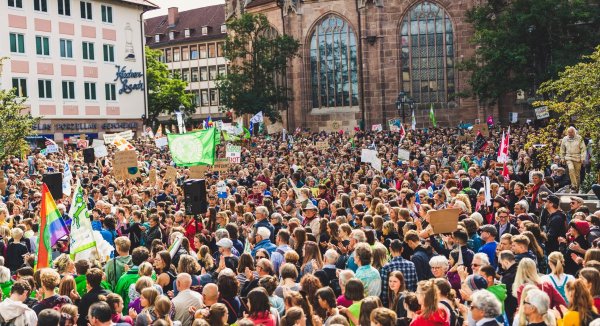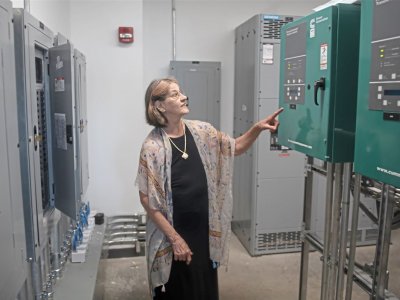Climate educators should step up to the plate and take civic action on climate change. The strategies and management approaches are already all around us. Now, it is just a matter of putting them together and holding the course. As educators and experts, we have seen firsthand the value we bring to our communities and our democracy at a time when our love of home and of country matter so much.
Climate disruption is here. As readers of this blog know, every credible risk-assessing organization from the Intergovernmental Panel on Climate Change (IPCC) to the World Economic Forum, from the Bulletin of Atomic Scientists to the U.S. Department of Defense recognizes that anthropogenic climate change threatens global stability.
The global is local as the last five years have shown us here in central Pennsylvania. In late October, 2016, a line of thunderstorms battered the Bald Eagle Valley with up to 8 inches falling in a matter of hours, killing one person, damaging property, and closing mountain roads for months. Centre County Commissioners declared a disaster emergency. In 2018, central Pennsylvania experienced its wettest year on record with more than 63 inches of rain. As summer drew to an end, our local Corl Street Elementary School was threatened with closure because of a mold outbreak. In 2020, a top-level official in the Pennsylvania Department of Conservation and Natural Resources informed us that the top workers compensation claim in the agency is Lyme Disease. Folks working in parks, rangers, and foresters encounter ever more ticks, a pest once checked by intense cold snaps. Today, you are lucky to get out of the woods without one. Whether in fast or slow motion, these are all human-amplified climate disasters. It is a daunting situation.
Where some see doom, we feel urgency and agency. Where some worry about getting into unpleasant arguments and lots of “No!”, we see communities where people hash out their differences and see every “No” as a future “Yes.” Just as we tell our students who struggle, we say and prove that we can do this and do it by example.
Renewable energy, green buildings, electric vehicles, and other technologies are cost-competitive with dirtier technologies. Soil, agricultural, and forestry practices can sink carbon. Public opinion has shifted positively across the United States including right here in central Pennsylvania. The economic, political, and technological conditions are closer to optimal. Drawdown is possible if we work together.
If you are a climate educator, you, your colleagues, and your peers can take this on three ways. Talk about climate change every day. Teach climate science and action by engaging your community. Engage your governments at all scales.
We need you to talk about climate action as much as you can. As Nathaniel Geiger and Janet Swim write, “Despite a solid majority of the public being concerned about climate change, most underestimate the degree to which others are concerned.” Here in central Pennsylvania, Yale surveys indicate that 70% recognize that it’s real. So let’s get them talking. It can be as simple as conversations with your neighbors or friends or as involved as working with your public library, school district, civic organization, church to set up a community forum. [We’ll write about deliberations more in a later blog.]
Climate change educators should create experiential learning opportunities in their local communities. The scope and sophistication will vary, but opportunities lie in wait for all students to apply classroom concepts in real-world community settings. Third graders learning basic science can participate in a tree-planting activity while learning ecological basics. AP Environmental Science high school students creating signage and websites explaining how vegetated stormwater infrastructure interacts with the carbon, nitrogen, phosphorous, and water cycles. University students can complete greenhouse gas inventories for municipalities. Upper-level Communication, Rhetoric, or Law students can facilitate public forums on climate change. All of us can attend the Solve Climate by 2030 Power Dialogues that make the global local. Everyone has a role to play.
Jump into the policy and political arena. Speak at public meetings during open public comment. Apply to be appointed to your Planning Commission or to a water, sewer, transit, or park authority. Run for office, any office. Whether you live in Philadelphia or Philipsburg, your local government manage buildings and energy, transportation and fleets, waste, water, and food. Since school boards teach the next generation, weigh in to urge a positive climate future. Most importantly, working positively, proactively, and knowledgeably sets a good example for our neighbors, bringing us together instead of driving us apart.
No matter which of these you do, do it with others. To paraphrase Ser Jorah Mormont from Game of Thrones, “No climate change advocate can survive in this world without help.” Make a team built on trust and a can-do attitude.
Activist and author Joanna Macy says, “The main thing is that you are showing up, that you’re here, and that you’re finding ever more capacity to love this world, because it will not be healed without that.” You can show up by stepping up, speaking with urgency, and acting with agency to move the needle on climate change. Get talking every day. Make community engagement the center piece of your courses. Engage your governments at all levels whether you speak at a public meeting or run for office yourself. The time is now.
For more, read "Science Alone Will Not Save Us, Civic Engagement Might" in Teaching Climate Change in America.








